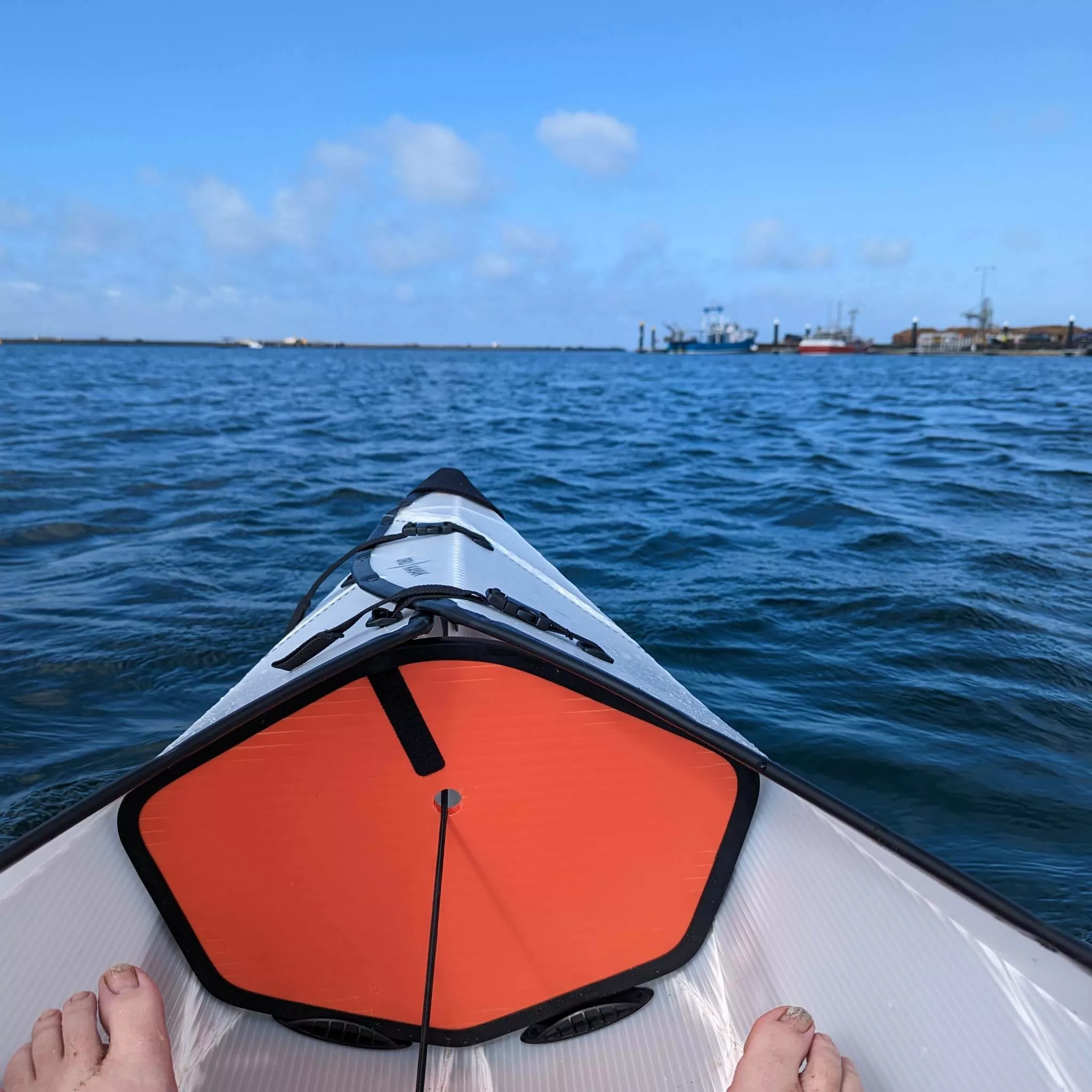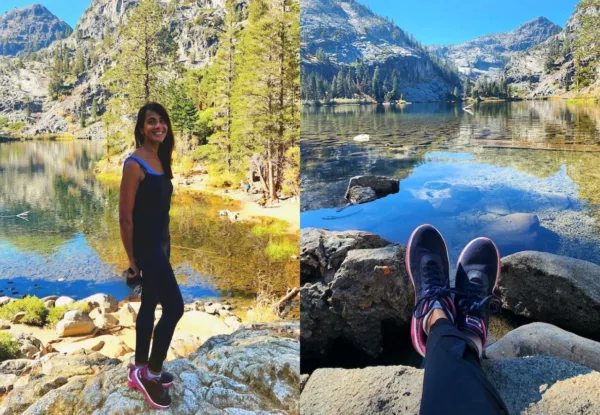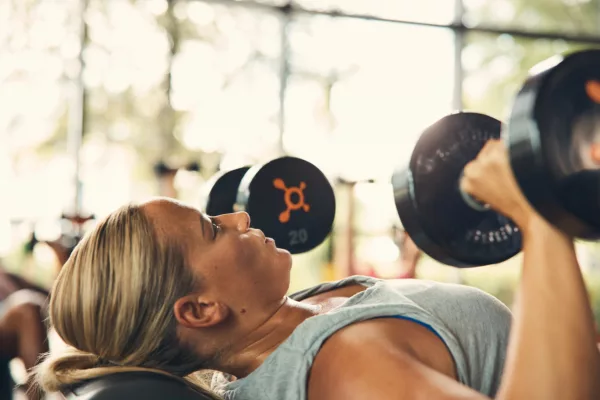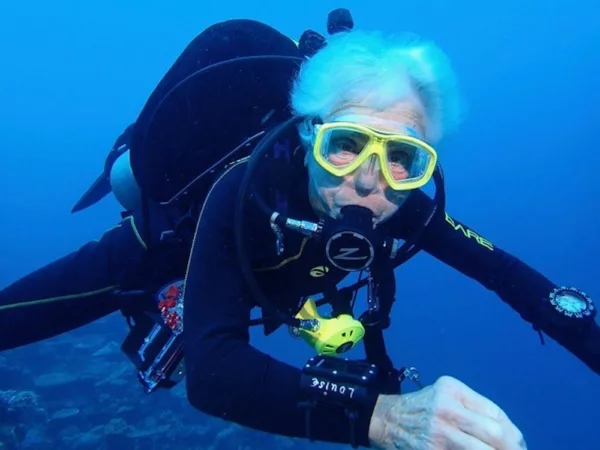How Folding Kayaks Can Change Lives

For their 15th wedding anniversary, Trent Sluiter of Cambridge, Ontario, bought himself and his wife, Holly, a pair of Tucktec folding kayaks. For Holly, 39, the gift meant far more than jewellery or flowers—it meant the freedom to get back outside.
 Trent Sluiter
Trent Sluiter
“You can’t go out in your kayak and be on a beautiful lake and be upset or angry or anxious,” says Holly. “It’s this instant calming that comes over.”
It’s a peace Holly doesn’t take for granted. She lives with a rare condition called occipital and trigeminal neuralgia. Her body breaks down the protective membranes surrounding the nerves in her face, neck, teeth and scalp, triggering severe migraines and shooting pain which Holly compares to a root canal.
In February 2020, she was scheduled for experimental surgery to implant a neurostimulator device, which uses an electrical current to interrupt the brain’s pain response. Then Covid-19 hit, and her surgery was postponed indefinitely. Because of the risk of interaction with anesthesia, she had to discontinue her pain medications while awaiting an opening in the OR.
“I was bedridden for six months. It was pretty grim. Most days it was so bad it even hurt to breathe. I would have extreme migraines, my nerves were swollen, I would have burns. I couldn’t eat or even move some days.”
After the surgery, Holly regained a lot of her mobility.
“I’m very thankful for what I have,” she says. “But the reality of it is, I do have a big battery pack in my chest, which makes things a little bit limiting.”
 Holly Sluiter
Holly Sluiter
To implant the neurostimulator, the surgeons had to cut through the muscles of her chest, compromising her upper body strength. She also has dozens of wires running through her neck and shoulders, which transmit electricity from her implant to her nervous system. Holly was once an avid hiker but can’t walk very far now due to the pressure the backpack places on her wires. At first, she tried inflatable kayaks, but was unable to untwist the valves on her own. Then they discovered Tucktec.
 Trent Sluiter
Trent Sluiter
Manufactured by a family-owned start-up in North Carolina, the Tucktec is made from a 305-centimetre sheet of polypropylene which rolls up into a 122 x 38 x 15-centimetre burrito you can sling over your shoulder like a duffle bag.
 Margaret Speas
Margaret Speas
To assemble, fold along the grooves and secure the folds with six steel clamps. Weighing in at just 13 kilograms, it’s light enough for Holly to carry and load in and out of her tiny hatchback without help from Trent or anybody else.
At first, Holly had difficulty rolling up the kayak because she struggled with the pulling motion. But with the help of the Tucktec customer support team, she found alternative methods.
“I’m actually very stubborn,” she says. “I want to do everything for myself. It’s nice to have help, but I don’t want to have to rely.”
 Holly Sluiter
Holly Sluiter
Now, every chance she gets, she takes “Big Red” out on the lakes and waterways near her home. A friend introduced her to the “Light Up the Night” kayak club, a group of “crazy kayak people” who decorate their yaks with LED lights and paddle by nursing homes and hospitals.
 Judy Reddick
Judy Reddick
“It’s been a fantastic way to be able to get up and get out and get going,” says Holly.
Holly is not alone. Patty Ryan, 74, of Payson, Arizona, ordered her blue Tucktec while she was recovering from surgery for bladder cancer.
“I said, ‘This is my motivator, to get healthy and to get out there on the water.’”
She named her kayak NED, which stands for “No Evidence of Disease.” Three years later, she’s cancer-free and celebrates life by getting outdoors.
“It’s absolutely everything. There’s peace, there’s tranquility. We all found during [the coronavirus pandemic] that we needed to have a little bit of nature.”
 Patty Ryan
Patty Ryan
Like Holly, Patty finds the Tucktec easy to carry and stow in her jeep. She can put it together herself, although it isn’t pretty. “I say ‘I’m wrestling the blue alligator.’”
You can find plenty of YouTube videos proving that the Tucktec can be set up in under two minutes, but for most users it takes closer to ten.
“I get people saying, ‘Do you need some help with that?’ I always say, ‘If I can’t do this on my own, I have no business being out here.’”
 Patty Ryan
Patty Ryan
Tucktec is just one of a new generation of lightweight, affordable folding kayaks that are making the sport accessible to those lacking the mobility and strength to manage a conventional hardshell kayak. Terravent and Pakayak make foldables comparable to Tucktec, but the biggest player in the space is the California-based Oru, which burst onto the scene in 2014 with an appearance on Shark Tank. Oru’s line of six origami kayaks range in price from $500 to $2000 US, while the Tucktec retails for $399. Like the Tucktec, Orus can be set up and packed up in minutes. They fold into a carrying case measuring 107 x 25 x 46 centimetres, or you can purchase a heavy-duty nylon backpack for $99. Besides being slightly lighter—their smallest model, the Lake, weighs just eight kilograms—what sets them apart is their sleek, minimalist design. Although they are now available in other colors, the classic model features a translucent white shell—made of double-layered polypropylene—and a bright orange interior.
Naomi Swift, 51, of Victoria, Australia, loves her nine-kilogram Oru Inlet. A former surfer, the water has always been her peaceful place, but until she got the Oru, multiple health challenges prevented her from enjoying the water.
After a double knee replacement—made necessary by early-onset osteoarthritis and osteoporosis—she can no longer balance on a surfboard. “[It] made kayaking so much more important to me,” she says. “[It’s] a way of feeling the water still, being on the waves.”
 Naomi Swift
Naomi Swift
Her knee replacements make walking and running awkward and uncoordinated. Even getting in and out of the kayak is awkward, but once she’s inside, she feels graceful and skilled.
“I can go quite fast,” she says. “It doesn’t slow me down.” She can even outrace her kids in their sit-on-top kayaks. She finds the Oru easy to maneuver despite having injured her left shoulder and wrist—which had to be completely reconstructed after a car accident. These injuries, combined with osteoarthritis, also hinder her ability to lift and carry a hardshell kayak. Naomi has tried inflatables but felt like she was “dragging a sack of water.”
“Pushing through the pain to get back full range of motion, and finding what I still could do was important,” says Naomi. “I didn’t want [my conditions] to claim more, or hinder more of my life. If you don’t move it or use it—you lose it—when it comes to joints and muscle strength.”
She gets a lot of positive comments, especially from seniors, who stop to marvel at the Oru. “I think they actually relate to the awkwardness, and then they see that once I’m out in the kayak, as it’s light, it’s totally achievable.”
 Naomi Swift
Naomi Swift
Like the Tucktec owners I spoke to, Naomi does not recommend taking the Oru out in deep or rough waters. Foldables are designed for flat waters close to shore. Their light weight makes self-rescue difficult, especially for someone with limited strength or mobility.
 Benjamin Lester
Benjamin Lester
Holly, Patty and Naomi urge folks not to give up on getting outdoors, no matter their age and physical ability.
“To get back outdoors is breathing in fresh air and feeling revitalized,” says Naomi. “Being in a house never gives me that. It’s worth the effort, worth pushing through the pain, worth finding a way forward.”
Patty encourages folks to “just do what you can and [do it] every day. Do it as often as possible. The ability will increase and the stability.”
“You just gotta do it,” says Holly. “It’s gonna be hard when you start. You’re going to get frustrated, but you just keep going. There’s going to be obstacles and there’s going to be hard days, but the good days far outweigh all the bad days.”
For more on kayaking, check out:
Canoe and Kayak Gear Roundup: 11 Awesome Items You Need to Paddle This Year
The Way of the Wolf: Gearing up for a Kayak Lap Around Vancouver Island
The Way of the Wolf: Solo on the Coast














